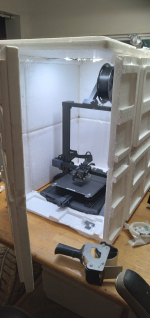MaximilianMM
1 W
- Joined
- Aug 23, 2021
- Messages
- 64
I'm looking into installing an Asgard ebike metal shed outside my home for my ebike, and running power to it (it comes with built in plates for this).
I'm aware the advice is generally to store the battery inside, but I'm looking into if there's a good way to store it outside. I'd much prefer this from a fire safety point of view.
I already have a Bat Safe fireproof box. Even with this, I'd prefer to keep it outside. I'm in the UK, so it gets cold, occasionally sub zero but rarely.
Do you think with some additional insulation for the battery inside the the Bat Safe box (maybe a neoprene cover or something), it would be ok throughout the year? Cheers.
I'm aware the advice is generally to store the battery inside, but I'm looking into if there's a good way to store it outside. I'd much prefer this from a fire safety point of view.
I already have a Bat Safe fireproof box. Even with this, I'd prefer to keep it outside. I'm in the UK, so it gets cold, occasionally sub zero but rarely.
Do you think with some additional insulation for the battery inside the the Bat Safe box (maybe a neoprene cover or something), it would be ok throughout the year? Cheers.


